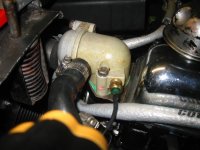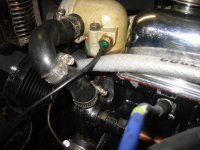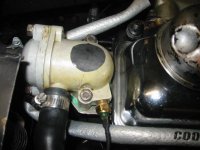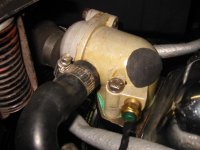I agree with Geo; either location will work fine. Yes, there will be some small difference in temperature between the surface of the housing, and the coolant flowing inside, but it won't be enough to worry about.
The pan of hot water works too; but still has uncertainties. When you get into the range of interest (around 180F), the surface of the water loses a lot of heat due to evaporation. Unless you're careful, you'll wind up with significant heat gradients within the water.
If you're using a TR4 type temperature gauge, they also respond so slowly that it's difficult to hold the temperature of the water constant long enough for the gauge reading to stabilize. In effect, the temp gauge doesn't give you the temperature right now, but rather a weighted average over the past several minutes.
And you still get to worry about the accuracy of the 'reference' thermometer. Etc, etc

 Hi Guest!
Hi Guest!

 smilie in place of the real @
smilie in place of the real @
 Pretty Please - add it to our Events forum(s) and add to the calendar! >>
Pretty Please - add it to our Events forum(s) and add to the calendar! >> 





